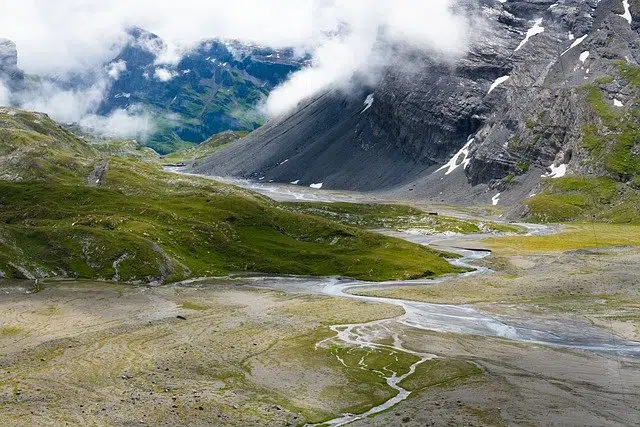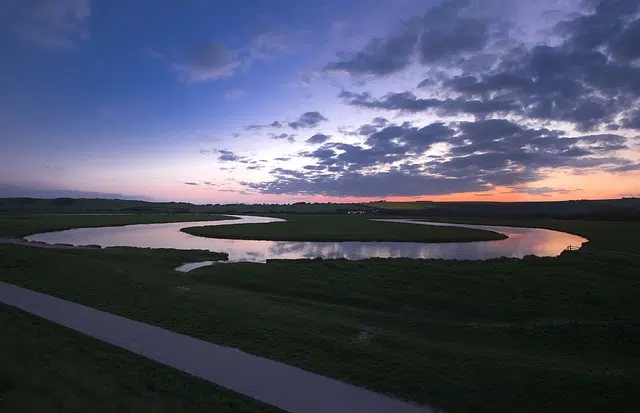
Meanders usually originate in the lower reaches of the river
Meander comes from the Latin Maeander , in turn derived from the Greek Maiandros . This is the name, in that language , of a river on the Asian continent whose course is characterized by its sinuosity.
The curves of the river
In this framework, each curve that a river traces in its course is called a meander. Meanders generally develop in those courses that cross an alluvial plain with a slight slope.
Typically, in the concave sector of the meander, the shore recedes and an erosion process occurs due to the action of centrifugal forces. In the convex area , however, the edge tends to advance. By combining the retreat in the concave part with the advancement of the convex section, the course develops.
Mostly meanders are generated in the lower reaches of a river. Erosion, in this framework, grows on the outside of the curve since a greater speed is recorded. On the inner edge of the river, on the other hand, sediment accumulates because the low speed prevents it from being dragged away.
Meander classes
There are different types of meanders. With a limited slope, and in front of the sediments on the banks, the river meanders with rambling meanders . If a tectonic uplift occurs, erosion resumes downwards and embedded meanders appear. The crossing of meanders, meanwhile, produces abandoned meanders when they run out of active current .
The wandering meander is the most common in the lower course and its existence tells us of a very low slope value . Embedding, on the other hand, includes a process known as rejuvenation , which begins when erosion resumes in a downward direction. The third type of meander mentioned above is the abandoned one , which originates after the crisscrossing of several meanders due to their growth: the abandoned one loses its current because the others cut one of its loops.
Related theories
Let's start with the stochastic theory , according to one of whose formulations states that the meander train arises from stochastic fluctuations in its flow due to the arbitrary existence of changes in its direction due to the obstacles found in its course. The term stochastic is defined as a system of non-deterministic behavior.
The regions where the slope is low present the formation of meanders that in many cases are not random, but are located towards the East as a result of the rotation of the planet and the alteration in the dissipated energy that is released from such movement.

Stochastic theory advocates arbitrary changes in direction
On the other hand we have the equilibrium theory , according to which the meander goes through a decrease until a balance can be observed between the ease with which the soil can be eroded and the capacity of the current to transport water and deposits. Any mass that descends has to lose its potential energy when interacting with the material in the bed.
The geomorphic/morphotectonic theory , meanwhile, refers to two points: the structure of the terrain and that of the rock, understood as the tectonic plate. These characteristics are not random, which is why neither are the paths along which the streams lead. Meanders, according to this theory, are formed by the obstacles that can be foreseen and in this way the channel is diverted.
Other meanings
The Royal Spanish Academy ( RAE ) also includes two other meanings of this word. On the one hand, it tells us that this is also what the layout of a road is called. In the field of architecture, on the other hand, we speak of meander to refer to the ornament based on the repetition of sinuous lines .
